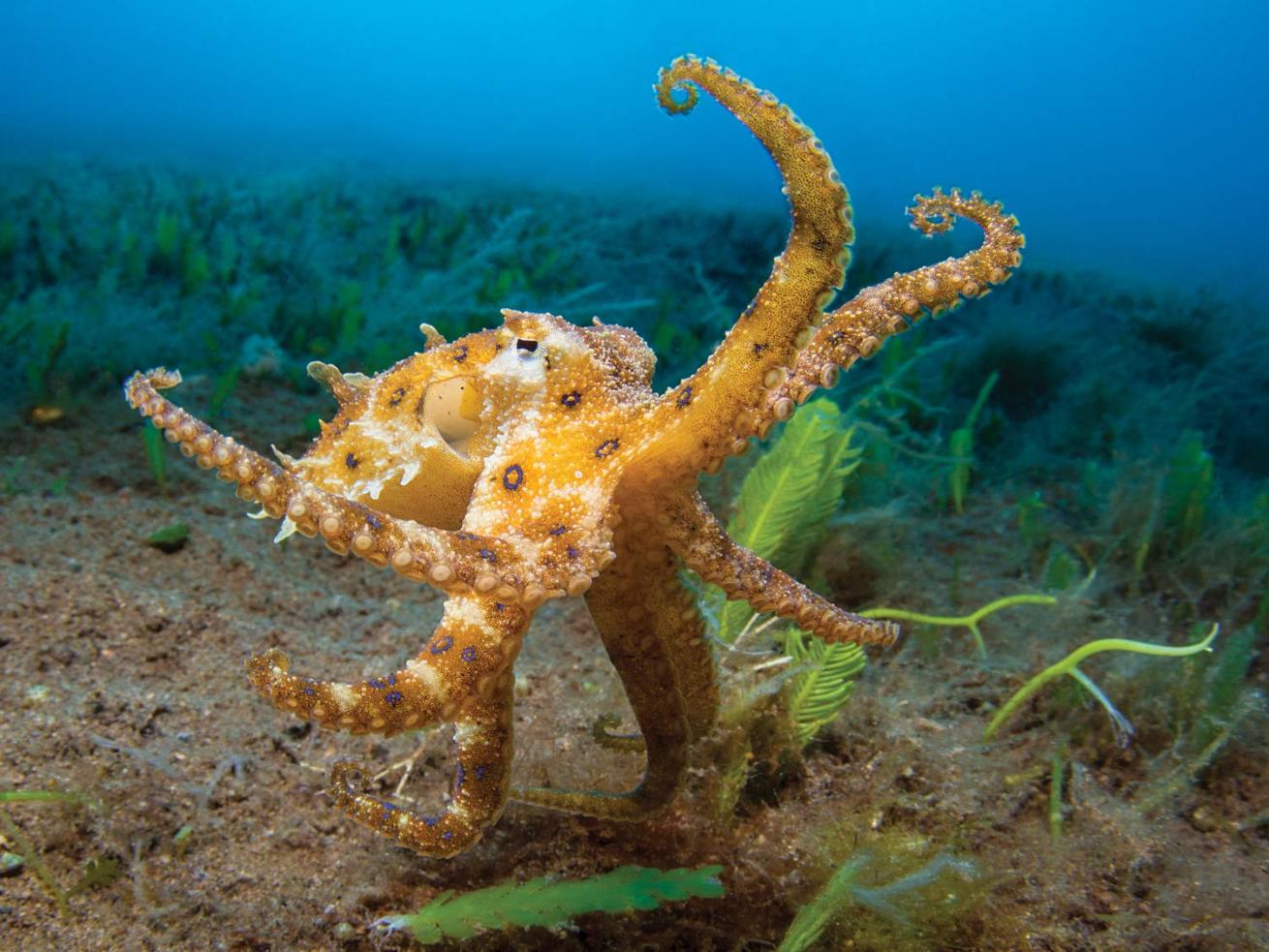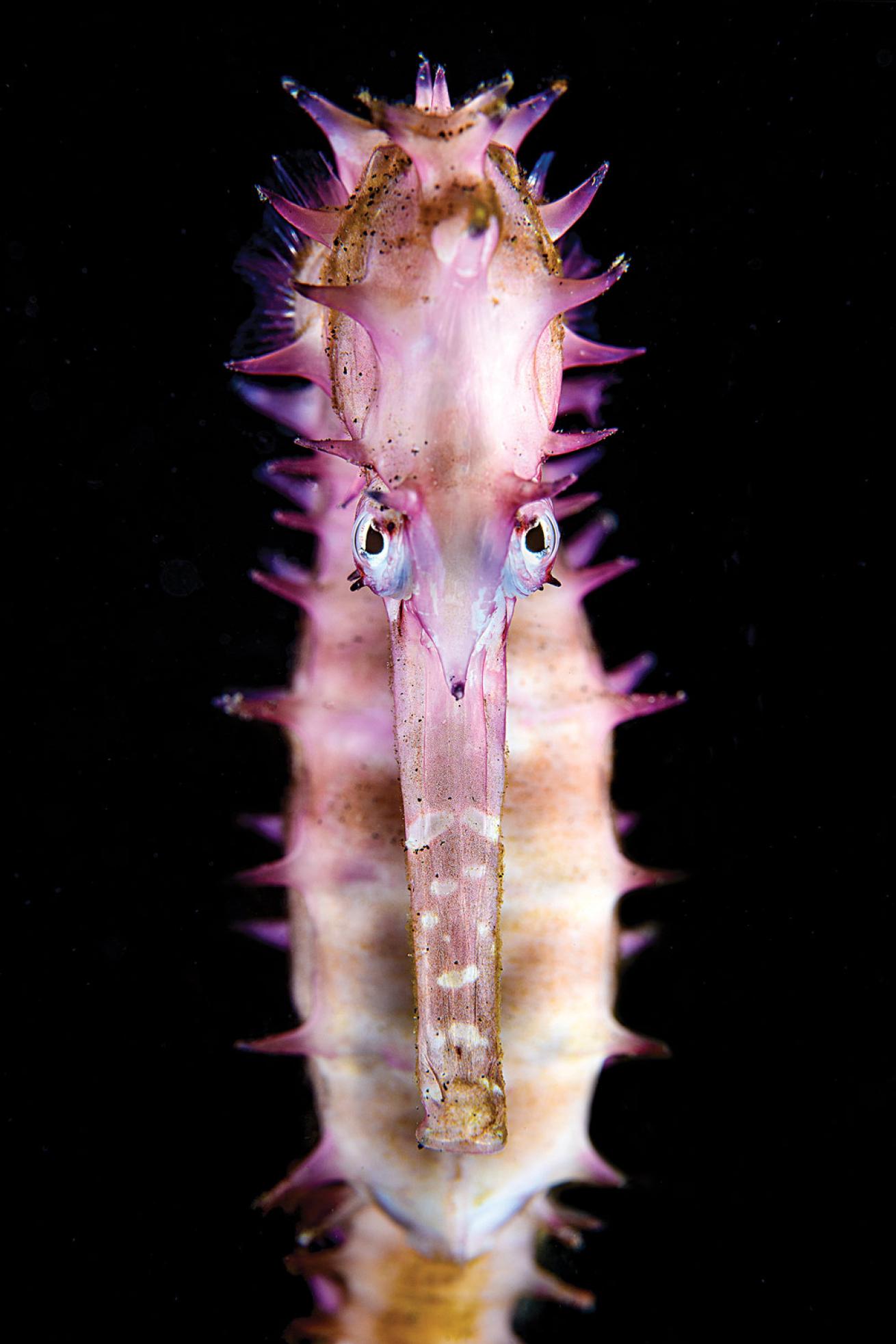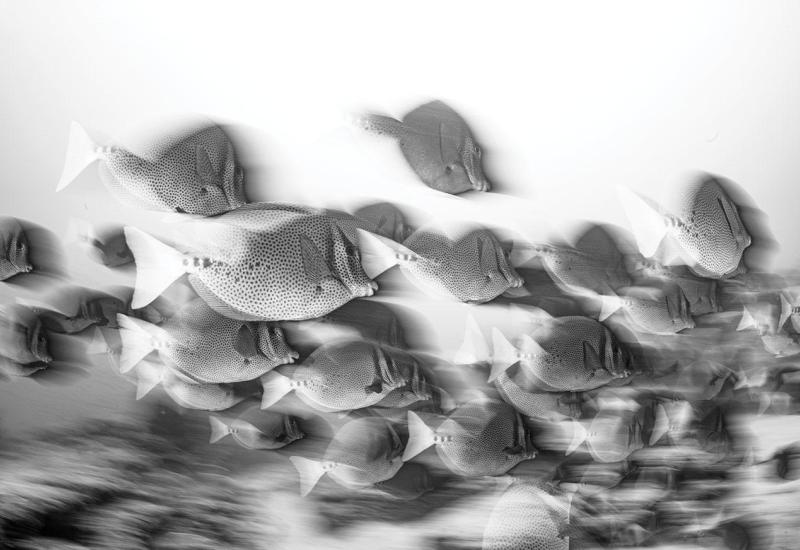Macro Photography Tips for Underwater Shooters

Alex MustardWide-angle lenses can be very effective on muck dives with confident subjects.
It’s not the murky visibility or the featureless topography that lures so many photographers to the muck-diving hot spots of Southeast Asia. The attraction is the animals. Frogfish, seahorses, octopuses, ghost pipefish and other weirdos are rare treats on coral reefs, but here on sandy or rubble-strewn slopes, they are the main course.
Part of our addiction is fed by the hunt: the anticipation of the search and the rush of discovery. The rest comes from the photographic feast. Photographers love these subjects because many of their bizarre adaptions are visual, such as camouflage, which comes across brilliantly in photos. On top of this, many are so confident in their disguises that they sit stock still, giving photographers the time to produce memorable shots.
Tip 1:
Don't Stamp-Collect
The best muck sites often have so many photogenic critters that divers surface laughing, or shaking their heads in disbelief. The downside to this super-abundance of subjects is when photographers become stamp collectors, snapping up as many as possible, but their pictures remain simple record-style shots. They are memories of what was seen, but they are not memorable images.
The solution is not to get caught up in the critter buzz. When your guide points, your first reaction should not be to shoot, but rather to take a moment to consider if it will make a powerful picture. If not, don’t invest precious dive time in it; keep searching for something with more potential. Many of my favorite muck photos are of more-normal creatures that the rest of the group snubbed. Explain to your dive guide what you want. Tell them you aren’t after specific subjects, but subjects that you think will make a good photo. Let them know you might turn down one hairy frogfish and then spend ages with the next.
Finally, never encourage guides to move a subject for a better shot. A study published in the journal Scientific Reports shows that flash photography has negligible impact on delicate creatures such as seahorses, but touching them has a big impact. When we leave subjects to do their thing, we also get the chance to capture natural behaviors we’d miss at first glance.
Tip #2:
Getting Rid of the Muck

Alex MustardInward lighting allows you to light the subject and not the sand behind.
The other photographic challenge is the muck. Black sand isn’t black; it’s gray or brown and flecked with light-colored shell fragments and pebbles. In short: It’s a messy, distracting background for photos. The good news is that there are many solutions to minimizing the impact of this unappealing backdrop.
The simplest is to find a subject that can be framed against open water. You often still need to earn that clean background by contorting yourself to get the camera in the right position. A closed aperture, fast shutter speed and low ISO will provide a black background, or you can achieve a blue background by opening the aperture, slowing the shutter speed, and raising the ISO. Subjects such as pygmy seahorses, xeno crabs, whip coral gobies and more lend themselves to being composed this way.
The other simple background solution is to look for critters that live on other animals, and use the larger animal as the entire background. We all know about anemonefish and anemones, but in the heart of reef biodiversity, almost every imaginable niche is exploited. Crabs and, particularly, shrimp make their homes on all sorts of other invertebrates: corals, sponges, sea cucumbers, starfish, crinoids, nudibranchs, anemones and more. If the larger species has pleasing patterns, use a closed aperture and shoot from parallel to the subject, to keep everything sharp. If a host has strong colors, consider opening the aperture and blur it into a smooth pastel background.
Read More: Underwater Photo Tips
Many of the star attractions of muck diving live out on the sand, and photographers have to work harder to hide it. When any background is farther away from the subject, it will be less focused, less lit and, in short, less distracting. Try to find a viewpoint that frames the subject against as distant a piece of background as possible. The golden rule is to get the camera low to the seabed so the sand behind the subject is as far back as possible. Opening the aperture will throw the background even more out of focus.
We can also de-emphasize the distracting muck with lighting. Techniques such as inward lighting, where the strobes are aimed to light just the subject and nothing behind, and snooted strobes, where the beams of the strobes are restricted to illuminate only the critter, are both quite effective.
Another option is to use a wide-angle lens, which makes the individual distractions of the muck insignificant because a large expanse of seabed is in the shot. The big challenge here is getting the relatively small subject close enough to the lens to be big enough in the final picture. The right kit makes all the difference: You need a close-focusing lens, a small dome port and a subject that is so sure of its camouflage that it will remain relaxed as you carefully position the camera. The result is an image where the subject pops out of the frame with an almost three-dimensional look, and the background gives a sense of the habitat without being distracting.
The key to memorable muck images is to remember that the subjects are only the start. Take great critters for granted, and dedicate your thoughts to capturing great backgrounds. That way you’ll come home with much more than a collection of fantastic subjects; you’ll come home with fantastic photographs.










